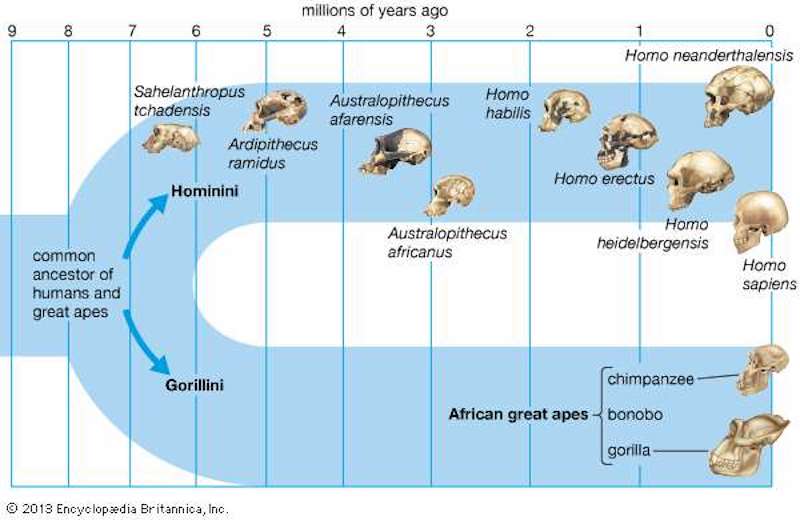Beginnings
Episode #1 of the course Human history and the first civilizations by Brian Fagan
Welcome to the course!
My name is Brian, and I’m an archeologist and writer about the human past for general audiences. My books include A Little History of Archaeology.
Over the next ten days, we’ll take a journey through ancient times, from human origins some three million years ago to the appearance of the first pre-industrial civilizations about 5,000 years before the present.
Hominins and Chimpanzees
Today, we enter the world of two to three million years ago and visit with our earliest ancestors in eastern and southern Africa. Tropical Africa, with its numerous apes, was the cradle of humanity, a continent with extensive grasslands and forests. Our closest living non-human relatives are chimpanzees, which, like humans, are members of the order Primates. DNA research tells us that our ancestors, known to scientists as hominins, members of the family Hominidae, split off from chimpanzees about six million years ago.

Human Evolution. The divergence of humans and great apes from a common ancestor.
By 3.5 million, their successors were standing upright, a critical development in human evolution that allowed them to move freely away from forests and into open country. Moving to open country increased mobility and enhanced brain size over thousands of years.
These were small hominins, about 3½ feet (1.1 m) tall, with small heads and protruding jaws. They lived mostly off wild plant foods and may have scavenged meat from predator kills. Eastern and southern Africa supported many different predators, including lions and saber-toothed cats.
Early Homo—The Earliest Human
Around three million years ago, there were numerous hominins in Africa, among them graceful-looking forms with rounder heads and slightly larger brains. Known to archeologists as early Homo, they stood upright and spent much of the time in the trees. Early Homo had a larger brain than other hominins and lived off a wider range of foods than its less advanced relatives.
By two million years ago, game meat had become a significant part of hominin diet. Fleet of foot, the earliest humans could run down small antelope, but much of their meat still came from predator kills. Constantly on the move, they would stay briefly by shallow lakes and streams but would have slept in the trees, safe from predators.

Artistic interpretation of Early Homo at the Westfälisches Museum für Archäologie, Herne.
These early human ancestors also differed in other important ways. They had sensitive fingers with opposing thumbs that enabled them to manipulate small objects. Crudely shaped clubs and heavy sticks were useful for killing animals. Early Homo also worked fine-grained stone into sharp-edged knives, scrapers, and choppers. Very simple stone flaking methods turned lumps of rock into highly effective, butchering tools such as jagged-edged choppers and razor-sharp knives and scrapers.
How they hunted larger game, we don’t know, for it would have required tough, pointed weapons and brilliant stalking abilities to get up close to their prey. We know something of their lifestyle and camps only from excavations into ancient lake beds at Olduvai Gorge, Tanzania, where they camped over 1.75 million years ago.
New Humans, Movement out of Africa
At this critical moment in human evolution, the number of early Homo in Africa was tiny, perhaps no more than a few thousand, and it was probably in Africa alone that they flourished. The rest of the world was without early Homo or other forms of the human ancestor.
Then, somewhere around two million years ago, new forms of early humans evolved in tropical Africa. But this time, in a world that was gradually becoming colder and drier, the newcomers soon spread far from their homeland, deep into Asia and Europe. They lived in highly mobile family bands and covered large distances while finding game and plant foods. But human populations were small and scattered. Most people probably only encountered a few dozen others in their short lifetimes. But armed with the simplest technology and weapons, they spread out of Africa and adapted to a broad array of tropical and colder environments with brilliant success.
Tomorrow, we’ll describe this slowly changing world and how its inhabitants laid the foundations for the appearance of modern humans.
Recommended book
Human Evolution: A Very Short Introduction by Bernard Wood
Share with friends
